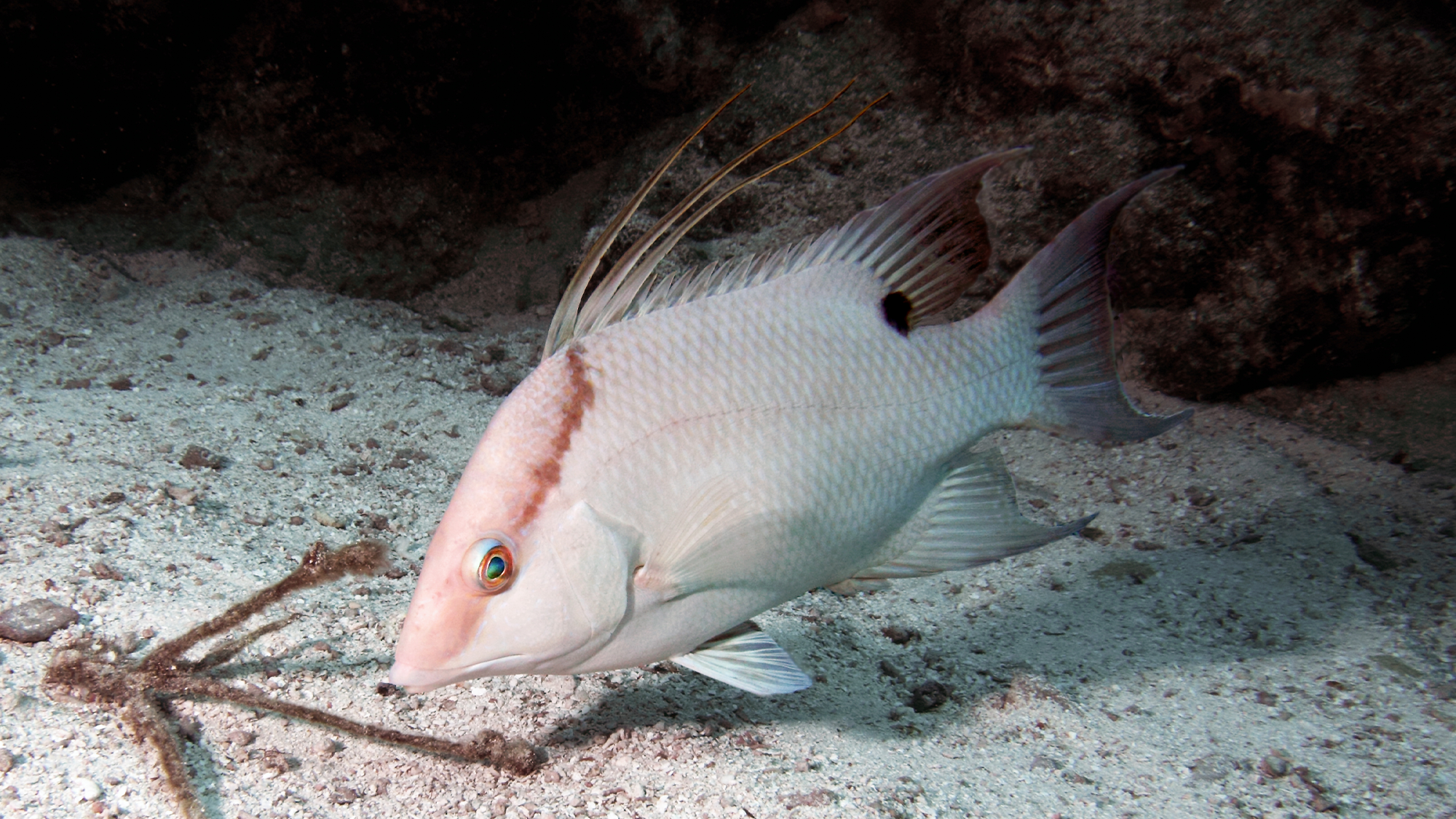

The pointy-snouted and reef dwelling hogfish that dot the Atlantic Ocean between North Carolina and Brazil are known for their color-changing skin. These chameleons of the sea can quickly switch from white to a reddish brown to blend in with reefs, but their skin may be hiding something else.
[Related: Octopus change color as they shift between sleep phases.]
A study published August 21 in the journal Nature Communications looked deeper into the hogfish’s sensory feedback system and found that the fish could be using their skin to help see underwater. They can also use this to take mental photographs of themselves from the inside.
University of North Carolina Wilmington biologist Lori Schweikert was inspired to study this phenomenon after she witnessed it first hand in the Florida Keys. When she saw that a hogfish could continue this camouflage act even after it had died, she wondered if hogfish could detect light using only their skin, versus relying on their eyes and brain.
In an earlier study, Schweikert and Duke University biologist Sönke Johnsen found that hogfish carry a gene for a light-sensitive protein called opsin that is activated in their skin. This gene is different from the opsin genes that are found in their eyes. Squid, geckos, and other color-changing animals also make light-sensing opsins in their skin, but scientists are unsure how they help the animals change color. One hypothesis is that light-sensing skin helps animals take in their surroundings, but it also could be a way that the animals view themselves.
In this new study, Schweikert and Johnsen took pieces of skin from different parts of the hogfish’s body and took images of them under a microscope. Up close, each dot of color on the skin is a specialized cell called a chromatophore. These cells have granules of pigment inside them that can be black, yellow, or red.
The movement of these pigment granules changes the skin color. When they are spread out across the cell, darker colors appear. The cell becomes more transparent when they cluster together into a tiny spot.

Next, the team used a technique called immunolabeling to find the light sensing opsin proteins within the skin. They saw that in hogfish, the opsins aren’t produced in the color-changing chromatophore cells. The opsins actually reside in other cells that are located directly beneath them.
Images taken with a transmission electron microscope showed a previously unknown cell type below the chromatophores that are full of opsin protein.
[Related: Some sea snakes may not be colorblind after all.]
According to Schweikert, the light striking the skin must pass through the pigment-filled chromatophores first before it gets to the light-sensitive layer. She and the team estimate that the opsin molecules in the hogfish are most sensitive to blue light. This is the wavelength of light that the pigment granules in the hogfish absorb best.
The fish’s light-sensitive opsins are somewhat like an internal roll of Polaroid film, that captures changes in the light and then can filter through the pigment-filled cells when the pigment granules fan out or scrunch up.
“The animals can literally take a photo of their own skin from the inside,” Johnsen said in a statement. “In a way they can tell the animal what its skin looks like, since it can’t really bend over to look.”
Eyes do more than merely detect light and work to form images, so it’s not enough to say that hogfish skin is like a giant eye.
“Just to be clear, we’re not arguing that hogfish skin functions like an eye,” Schweikert added in a statement. “We don’t have any evidence to suggest that’s what’s happening in their skin. They appear to be watching their own color change.”
The findings may help researchers develop better sensory feedback techniques for devices that need to fine-tune performance without eyesight or camera feeds, such as robotic limbs and self-driving cars.
